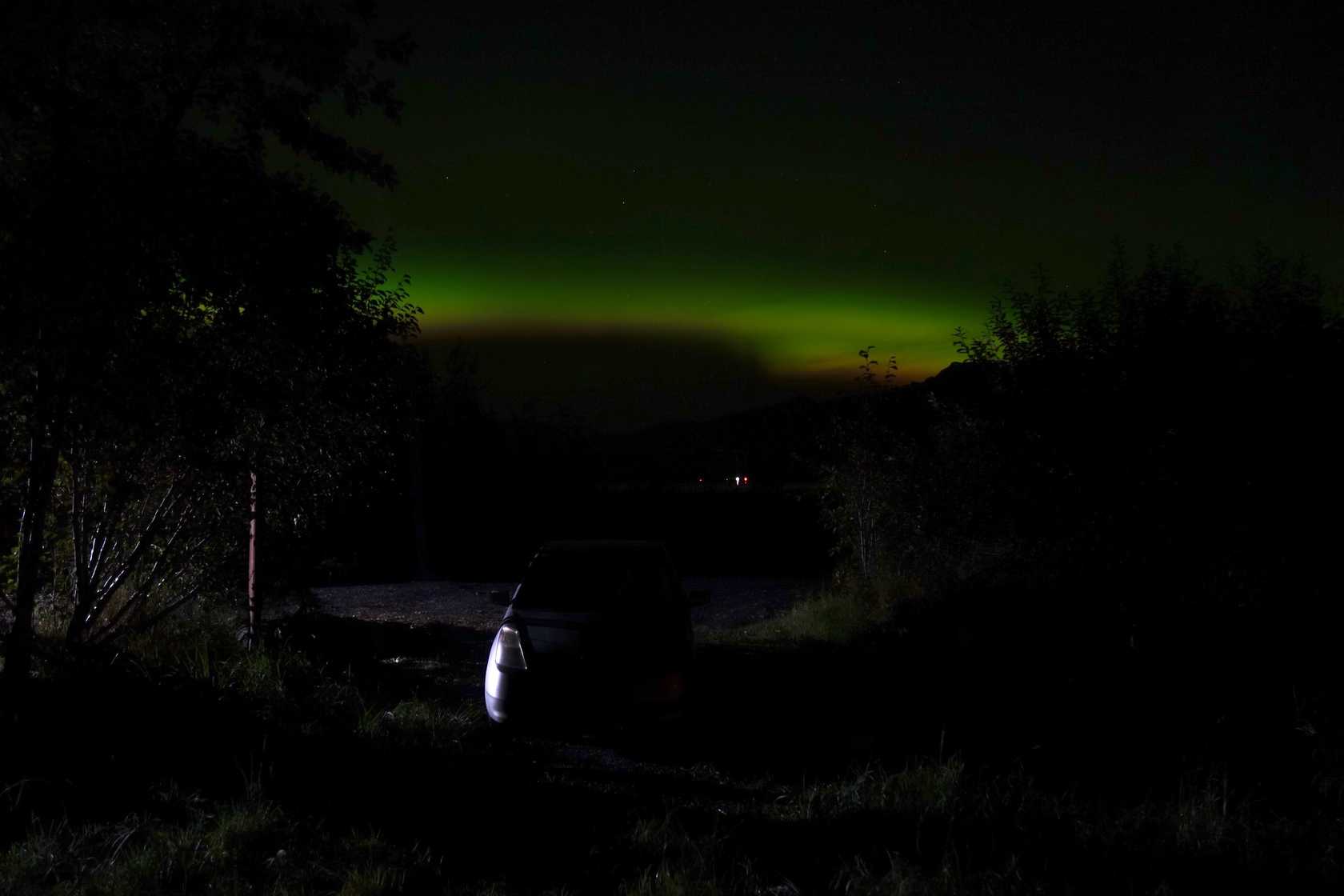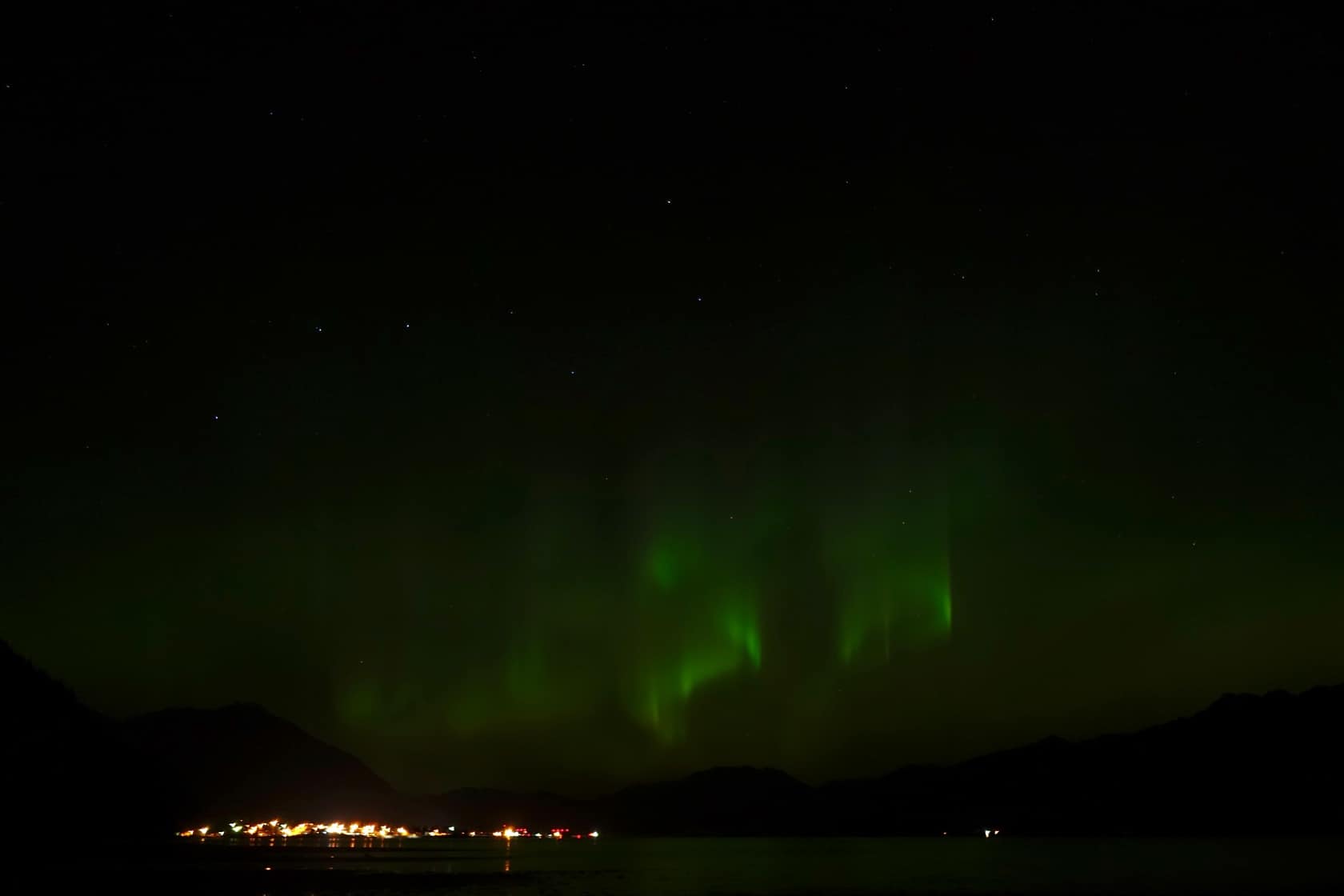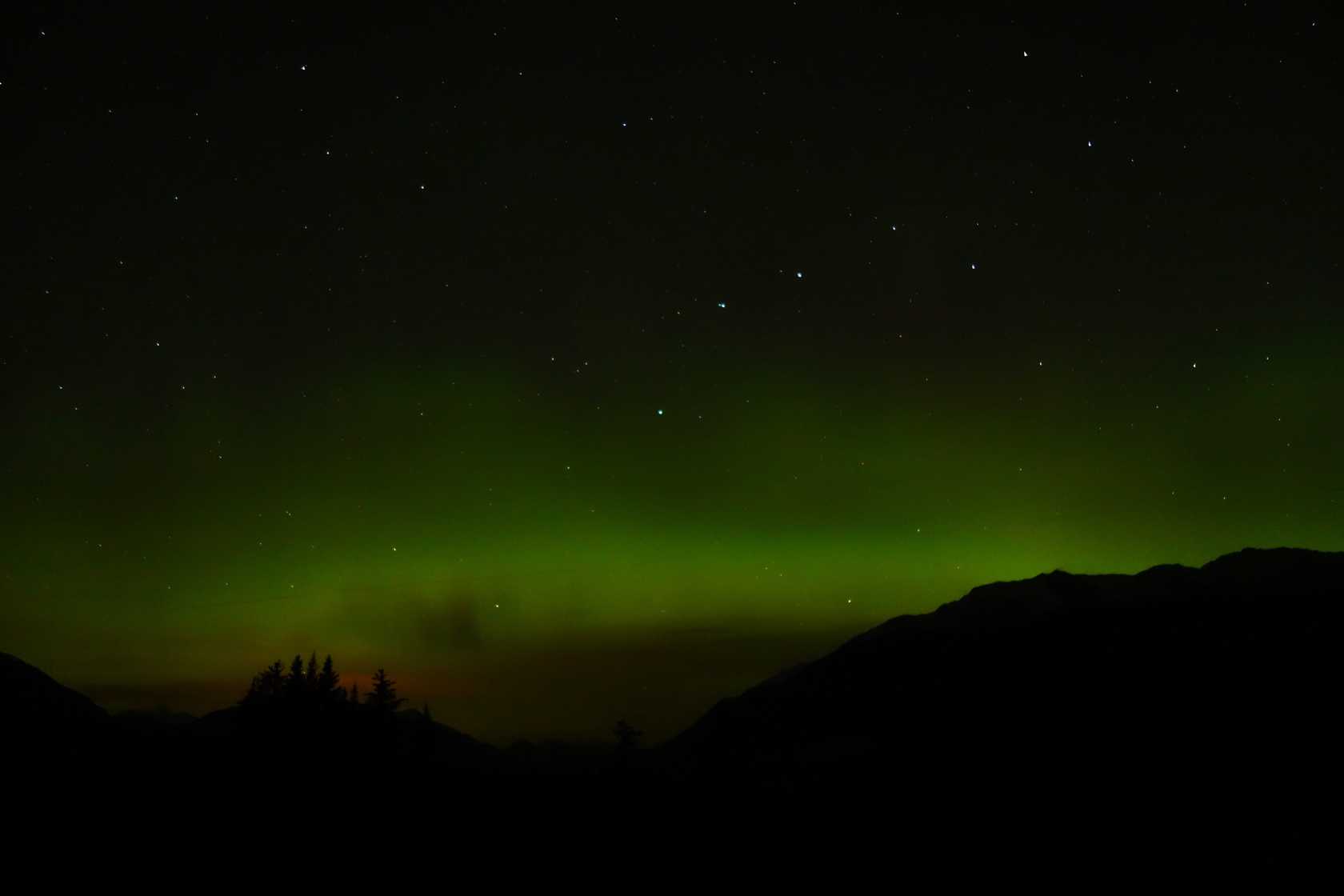Less than two days into my lengthy road trip to Alaska, I'd nominally fulfilled one of my dreams for the trip: see the aurora borealis, a.k.a. the northern lights.
However, that sighting of a faint glow on the northern horizon and a few minutes of a dancing green ribbon seen through the windshield of my car while driving through northern British Columbia merely stoked my curiosity further.
The night after driving through Denali, I headed back out to the Savage River in the park at 2 a.m. in hopes that the skies would clear up. Alas, they didn’t. I kept an eye on both aurora and weather forecasts in the coming days as I passed through Willow and on further south to Anchorage. No go at either place, as clouds persisted.
From Anchorage I headed south to Seward on Alaska’s south central coast. Seward’s notoriously rainy in September and my first night there didn’t disappoint. Starting a few nights later, the aurora forecast was quite good for a couple day stretch. One night, I stayed up late reading in hopes of catching the aurora. I’d just about given up hope when around 12:30 a.m. I made my semi-hourly sky check and the aurora unmistakably graced the sky. I shot a couple pics from the porch of the dry cabin where I was staying before taking a chair and blankets out to Lowell Point beach across the street.

I sat there shivering on the stony shore for a few hours watching the aurora move over central Seward, which lay to my north across Resurrection Bay. The town’s lights weren’t ideal, but this was by far the best auroral display I’d ever seen, so I was plenty pleased by the time I called it a night as 3 o’clock approached.

Now, I was excited! I planned the following day around the aurora. For a few hours, I even debated driving between 3 and 8 hours north to increase my chances of seeing a stunning light show. No need. I studied Google Maps and found that there was a rise on the highway about 15 miles north of town with what appeared to be a relatively open area to its north. I left the cabin around 12:30 a.m. and planted myself in a chair by 1.
Oh, what a night! The aurora was clearly visible above the mountains to the north. What’s more, I quickly figured out that if I switched my camera from its “night scene” mode to its shutter speed mode and lengthened the exposure to 6 or 8 seconds, I got awesome photos of even relatively dim, indistinct aurora. I proceeded to take hundreds of photos that night. At times, I was annoyed with myself for not simply taking in the awesome scene around me, but most of the time, the camera was a tool that provided me with even more spectacular views of the aurora.

The evening started with primarily diffuse auroral fields to the north. They gave me a good chance to tune in my camera settings, work on scene composition from that location, and marvel at the beauty I was capturing (along with figuring out how to deal with a crappy tripod and one small camera battery in the cold). Then, came some dancing green ribbons of the sort I’d seen previous. Oh, but the aurora was just getting warmed up.

Gradually, auroral wisps filled the northern half of the sky. These ethereal impulses would appear to the north like steam over coffee on a cool desert morning. Barely there, they’d shoot through sky, pulsing in and out of existence, before calling it quits for good around the zenith. Ah, but as the night got going, the range of the impulses increased, eventually streaking all the way overhead to the southern horizon. It’s hard to put into words the speed, dynamism, or fleetingness of these pulses and I’ve never seen a photo or video that’s included them. They are a phenomenon experienced only in the moment.
Then came the crazy caterpillar. As you watch the aurora for hours, you start to pick up when it’s building and when it’s waning. Well into the night, after the decent number of other onlookers had all gone home, the main aurora arc continued to build…. faster, brighter, more colorful. Wow. If ever there was an acid trip in the sky, this was it. Through the night, I’d been honing my aurora shooting skills, but for a couple minutes, the aurora was simply too bright and too dynamic for me to capture. I just watched.

With the crazy caterpillar behind me, I still sat in that freezing field for another three hours, unable to pull myself away. I’d never seen anything like this aurora and I might never again. I started taking fewer photos and spent more time to really take in the aurora as frost settled onto my camera lens and the sleeping bag in which I wrapped myself. While sleep would have been great, seeing the aurora persist beyond dawn was breathtaking.

A night later, I went out again. I headed out an hour earlier and drove another 15 minutes further up the road to get a different perspective over a lake. Alas, the aurora was almost entirely a nebulous glow on the northern horizon occasionally with more vibrant streaks here and there. It was fun shooting a few photos from a new location and a lot more comfortable, as I’d picked up some chemical hand warmers and dressed even more warmly than the night before. Still, I called it a night after two-and-a-half hours.

Two days later, I left Seward, ran the Girdwood Trail Marathon south of Anchorage, and started a long, rather hurried drive toward Juneau along the Glen Highway, Tok cutoff, and Alaska Highway before shooting down the ferry port at Haines. While the aurora forecasts were starting to wane, the night’s forecast was still far above background levels. Alas, as I drove through the evening and into the night on the Glenn Highway cloudy skies persisted. But I’d planned to drive on for some hours anyway, and there was the slight chance that it’d get clearer the further I headed into the interior. As if on cue, the skies cleared and as I approached the Alcan, the aurora beamed like a beacon at the end of my black spruce-lined runway.
I stopped. Right in the middle of my lane. There are many joys to be had in the emptiness that is Alaska and this is one of them. Not only did I park in the road (there was hardly a shoulder anyway), but I set up my tripod on the yellow stripes in the middle of the road for multiple long exposure photos.
At Tok, I turned toward the east on the Alcan. Now, the auroral arc appeared to rise over the thick spruce forest on the north side of the road. What contrast!

Ah, and the lakes that dot the region provided their own platforms for the northern lights! For hours I drove on with active eye on the skies around me. This far east, the auroral oval sinks much further south and the display grew stronger and rose high above me, streaking from one end of the sky to other like the biggest, brightest rainbow you’ve ever seen. Whenever the display was at its most active or the scenery inspiring, I would stop, pull my already setup tripod from the trunk, and start shooting more images from the road.

Perhaps mercifully, the aurora diminished rapidly after 4:30 a.m. And by 5:30 a.m., when I needed to stop for the night in Destruction Bay to refuel in the morning when the only gas station, I was sated. For an entire night, the aurora had urged me on and kept me company. I’ll never forget it.

Sources for Aurora Tracking and How to photograph them.
I most often employed these iPhone apps:
- Aurorasaurus – A great real-time visible probability map and a solar wind-velocity chart to show short-term fluctuations.
- Aurora Forecast – Tons of data with good medium- and long-range forecasts.
On the web, AuroraForecast.com has an easy to understand three-day forecast, while you can find a three-day map-based forecast from the Space Weather Prediction Center: www.swpc.noaa.gov/products/aurora-3-day-forecast .
If you’re spending a long time up north or like to geek out on this sort of thing, there are a ton of additional aurora forecasting resources.
While pro photographers have the inside track on astounding aurora photos, even an amateur like myself can take gasp-garnering pics.
First off, you’ll want a tripod, preferably with a ball joint, but my broken $20 el cheapo worked. In a pinch, any steady object will work.
Second, a camera with a decent optical sensor would be nice. It needn’t be a couple thousand dollar DSLR, as a nice point-and-shoot with some manual settings will work just fine. I used a Sony RX100-II with success. You might be able to get something with a smartphone camera, but it’ll likely be pretty underwhelming. Bring extra batteries or a means of charging your camera in operation both because you’ll take lots of shots and cold nights kill your batteries.
Third, have a willingness to experiment. The first night I shot the aurora merely using my camera’s “night” mode and it was “meh.” The next night, I switched to manual shutter settings and got to playing with exposure length. As time went by, I’d use different exposure lengths when shooting different types and intensities of aurora. Here’s a page with some good basics and starting points for shooting the aurora: http://auroranotify.com/learn/
